Global Agriculture Equipment Market - Comprehensive Data-Driven Market Analysis & Strategic Outlook
The global agriculture equipment market has been the pillar of modern farming, having transformed from humble mechanical beginnings to a highly advanced enterprise that combines innovation with the globe's high appetite for food. Its origin began at the later part of the 19th century when farmers started mechanizing with rudimentary machinery such as plows and seed drills. This early phase was as much one of survival as it was one of efficiency—farmers could plow more fields and sustain expanding populations with the introduction of machinery. Steam-powered tractors introduced the first hinge, opening the way for mechanized farming to become the economic foundation of rural societies.
- Global agriculture equipment market worth approximately USD 181.1 Billion in 2025 and projected to register a CAGR of approximately 6.8% through 2032, with potential to exceed USD 287.1 Billion.
- Agriculture Tractors possess nearly 35.8% market share, driving innovation and expanding uses via stringent research.
- Growth drivers: Growing global food demand due to population growth., Technological innovations such as precision agriculture and automation.
- Opportunities include: Growing adoption of smart and autonomous farming equipment.
- Key insight: The market is set to grow exponentially in value over the next decade, highlighting significant growth opportunities.
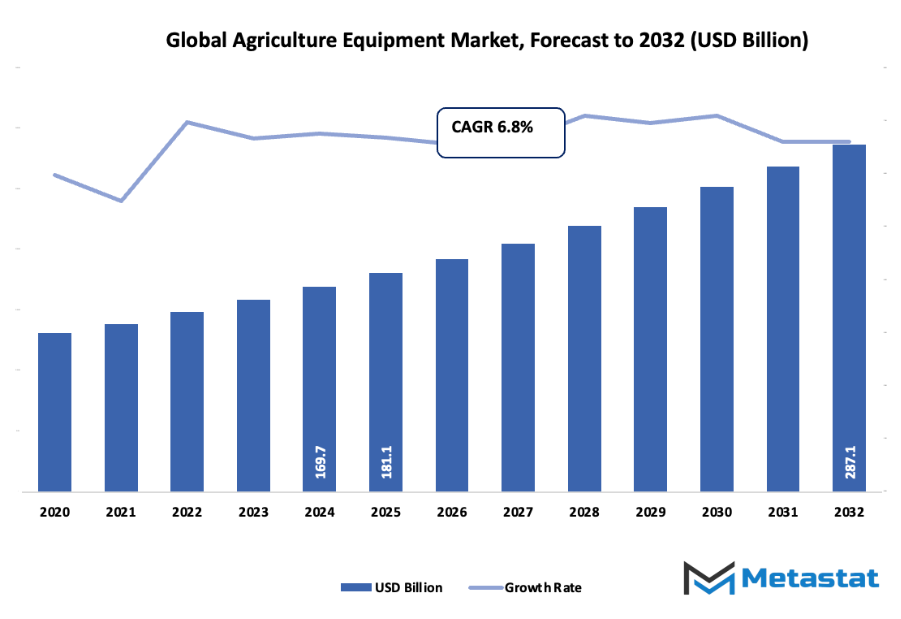
By the mid-20th century, the transition towards internal combustion engines and hydraulic systems transformed the world's agriculture equipment market, shaping the way fields were plowed, harvests reaped, and fruits and vegetables hauled. The profile of the market changed once again when automation entered the picture. Harvesters and tractors were being created by companies that could carry out precision work with the help of initial computer systems and satellite images. With every step forward, farmers were inching towards data-driven agriculture, reducing wastage and increasing production.
The 1990s and the beginning of the 2000s saw the advent of digital technology that transformed the entire market. GPS-enabled tools, sensor-based irrigation, and condition-based maintenance were the center of attention for modern agriculture. They allowed farmers to monitor soil condition, climate, and crop growth in real time. This redefined the expectations of producers and consumers who sought sustainability as well as productivity. Governments around the world began setting emissions and energy standards, and manufacturers began creating cleaner, smarter equipment. The global agriculture equipment market is now where automation, artificial intelligence, and planet stewardship intersect. Although traditional machinery remains central in much of the world, the future will be moving toward autonomous tractors, drones, and data-driven farm management systems.
What was once simple mechanical support has transformed into a digitally connected ecosystem that will continue to redefine how the world grows its food. The future path will be as much about science mastery as it will be about balancing progress, planet, and people.
Market Segments
The global agriculture equipment market is mainly classified based on Equipment Type, Application.
By Equipment Type is further segmented into:
- Agriculture Tractors: Tractors used in agriculture will remain the backbone of farm operations, serving as versatile and powerful machines capable of carrying out multiple tasks. Future designs will focus on automation, electric power, and fuel efficiency. GPS and AI-guided smart tractors will improve accuracy, reduce wastage, and enhance productivity in big and small farms in the Agriculture Equipment market across the globe.
- Harvesting Equipment: Harvesting equipment will continue to be cutting-edge in terms of providing increased speed and precision during crop harvesting. Future machines will have sensors and automated adjustments to avoid loss of crop and provide quality. The market will benefit from these advances in technology as farmers attempt to achieve high production and streamline harvesting activities effectively.
- Irrigation & Crop Processing Equipment: Irrigation and crop processing equipment will move towards smart water management and green resource utilization. Next-generation technologies will focus on sensor-controlled irrigation and solar-powered technologies to optimize the use of water. The market will grow as these technologies make agriculture climate resilient and enhance overall crop yields.
- Agriculture Spraying & Handling Equipment: Farm spraying and handling equipment will include automation and precision control to ensure proper application of pesticides and fertilizers. The focus will be to reduce chemical usage and protect the environment. In the global agriculture equipment market, this will contribute to promoting healthy crops and sustainable agricultural outcomes.
- Soil Preparation & Cultivation Equipment: Tools for soil preparation and cultivation will be advanced by real-time soil analysis and automation. These machines will be designed to minimize soil erosion and enhance nutrient retention capacity. The market will expand as these technologies advance land health and prepare the land effectively for farming and sowing.
- Others: Other equipment will include transportation, storage, and maintenance equipment that will play the role of complementing the entire farming system. Performance will be enhanced, downtime reduced, and operational flexibility increased through integration and automation technology. These factors will also promote consistent growth in the market across various regions and systems of farming.
By Application the market is divided into:
- Land Development & Seed Bed Preparation: Land development and seed bed preparation will see continued use of advanced machinery designed to improve soil structure and readiness for planting. Automation and precision depth control will enhance field uniformity. The global agriculture equipment market will expand as modern tools replace traditional labour-intensive methods.
- Sowing & Planting: Sowing and planting equipment will continue to focus on precision and efficiency. Smart seeders and planters equipped with real-time monitoring will ensure optimal seed placement and spacing. These improvements will increase productivity and contribute to steady progress within the global agriculture equipment market in the coming years.
- Weed Cultivation: Weed cultivation equipment will evolve with robotics and AI-driven detection systems that minimize herbicide use. Mechanical weed control methods will also advance to maintain crop health and sustainability. Such developments will drive demand in the global agriculture equipment market as farmers adopt eco-friendly weed management solutions.
- Plant Protection: Plant protection will rely on equipment that delivers targeted pest and disease control through smart spraying and monitoring. These technologies will reduce resource wastage and environmental impact. As awareness of sustainable practices increases, the global agriculture equipment market will continue to expand in this segment.
- Harvesting & Threshing: Harvesting and threshing will benefit from automation and advanced material handling systems that ensure minimal crop loss and improved quality. Integration of AI and IoT technologies will enhance performance and operational efficiency. Such progress will strengthen the global agriculture equipment market and support modern agricultural growth.
- Others: Other applications such as post-harvest management and storage will continue to gain importance. Equipment designed for sorting, grading, and packaging will become more sophisticated, ensuring better food preservation and value addition. These advancements will further contribute to the overall expansion of the global agriculture equipment market.
|
Forecast Period |
2025-2032 |
|
Market Size in 2025 |
$181.1 Billion |
|
Market Size by 2032 |
$287.1 Billion |
|
Growth Rate from 2025 to 2032 |
6.8% |
|
Base Year |
2024 |
|
Regions Covered |
North America, Europe, Asia-Pacific, South America, Middle East & Africa |
By Region:
- Based on geography, the global agriculture equipment market is divided into North America, Europe, Asia-Pacific, South America, and the Middle East & Africa.
- North America is further divided into the U.S., Canada, and Mexico, whereas Europe consists of the UK, Germany, France, Italy, and the Rest of Europe.
- Asia-Pacific is segmented into India, China, Japan, South Korea, and the Rest of Asia-Pacific.
- The South America region includes Brazil, Argentina, and the Rest of South America, while the Middle East & Africa is categorized into GCC Countries, Egypt, South Africa, and the Rest of the Middle East & Africa.
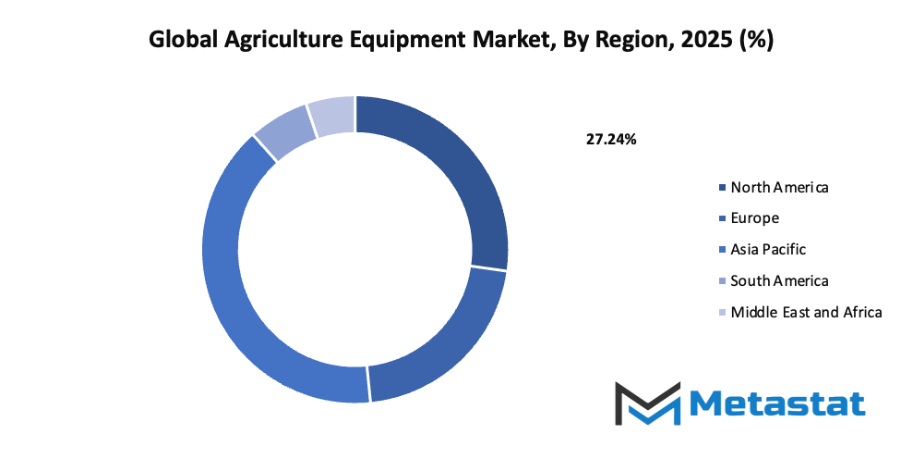
Growth Drivers
- Rising global demand for food due to population growth: Rising global demand for food due to population growth will continue to push the global agriculture equipment market forward. Increasing population levels have created a constant need to produce higher yields with limited resources. Farmers are turning to efficient equipment that can enhance productivity and reduce manual labour. This shift is helping to improve output and meet the growing food demand worldwide. The steady expansion of urban areas and shrinking farmland have further encouraged investment in modern tools to achieve sustainable and large-scale production.
- Technological advancements such as precision farming and automation: The global agriculture equipment market will experience strong growth as technology reshapes farming methods. Precision farming and automation allow for more accurate planting, irrigation, and harvesting, reducing waste and improving crop quality. Machines integrated with sensors and GPS systems help monitor soil and weather conditions in real time. Automation also minimizes the dependency on labour while increasing operational efficiency. Continuous innovation in digital tools and equipment will make farming more predictable, cost-effective, and sustainable in the future.
Challenges and Opportunities
- High initial cost of advanced agricultural machinery: High initial cost of advanced agricultural machinery remains a major barrier for many farmers in the global agriculture equipment market. Modern machines offer long-term benefits, yet their upfront investment is often beyond reach for small and medium-scale farmers. Maintenance expenses and the need for skilled operators also add to the financial strain. This challenge limits the adoption rate in several countries where traditional methods still dominate agricultural practices. Addressing affordability through financing options or government incentives could help expand usage across all farming levels.
- Limited access to finance and infrastructure in developing regions: The global agriculture equipment market faces additional hurdles in developing regions due to weak financial systems and poor infrastructure. Farmers often struggle to access credit facilities required to purchase modern machinery. Transport and logistics issues also make it difficult to deliver or maintain equipment effectively. Lack of training and technical support further slows down mechanization. Improving rural financing, establishing support programs, and investing in rural infrastructure will be key steps toward improving agricultural productivity and technology adoption.
Opportunities
Growing adoption of smart and autonomous farming equipment: Growing adoption of smart and autonomous farming equipment will bring a major transformation in the global agriculture equipment market. The use of drones, autonomous tractors, and robotic harvesters will help optimize farming operations and minimize human intervention. Data-driven decision-making through artificial intelligence will make crop management more efficient. Smart machines will not only increase yield but also promote sustainable farming practices. As awareness and accessibility improve, these technologies will redefine modern agriculture, leading to higher efficiency and global food security.
Competitive Landscape & Strategic Insights
The global agriculture equipment market is moving toward a future defined by innovation, automation, and sustainable solutions. The industry is a mix of both international industry leaders and emerging regional competitors, all working toward enhancing productivity and efficiency in farming. As agricultural practices continue to advance, companies are focusing on developing smart machinery that reduces manual labour and increases precision in every stage of cultivation, from soil preparation to harvesting.
Major competitors such as AGCO Corporation, FlieglAgro-Center GmbH, APV GmbH, Bellota Agrisolutions, CLAAS KGaA mbH, CNH Industrial N.V., Deere & Company, Escorts Limited, HORSCH Maschinen GmbH, ISEKI & Co., Ltd., J.C. Bamford Excavators Ltd, Quivogne CEE GmbH (Kiwon RUS LLC), Rostselmash, KRUKOWIAK, KUBOTA Corporation, KUHN SAS, LEMKEN GmbH & Co. KG, Mahindra & Mahindra Ltd., Mascar SpA, and Maschio Gaspardo S.p.A. continue to shape the competitive landscape. These companies are pushing boundaries in technology and design, aiming to meet the growing global demand for food while tackling issues such as labour shortages and changing climate conditions.
The global agriculture equipment market is expected to see greater integration of automation and digital tools. Technologies such as GPS-guided systems, drones, sensors, and AI-based monitoring tools are being used to collect and analyze data that helps farmers make better decisions. These tools will not only improve crop yield but also ensure the efficient use of water, fertilizers, and energy. The goal is to build a farming system that is productive yet environmentally conscious.
Sustainability is becoming a major focus for manufacturers. There is a clear shift toward machines that consume less fuel, release fewer emissions, and support renewable energy sources. Electric and hybrid tractors, as well as autonomous machinery, are no longer distant concepts but practical solutions being adopted in several regions. This direction reflects a long-term commitment to reducing the environmental impact of farming while improving profitability for farmers.
Collabouration between established manufacturers and new regional companies is helping create localized solutions for different types of crops and terrains. While international corporations bring advanced research and large-scale production, smaller regional players contribute a better understanding of local farming needs. This cooperation will drive innovation suited to various climates and economic conditions.
Looking ahead, the agriculture equipment market will likely become more connected and data-driven. Smart farming will turn into the standard approach rather than an exception. Equipment will be designed to communicate with other machines and systems, enabling real-time adjustments and performance tracking. This shift will transform agriculture into a more precise, efficient, and sustainable industry that can meet future food demands without exhausting natural resources.
Market size is forecast to rise from USD 181.1 Billion in 2025 to over USD 287.1 Billion by 2032. Agriculture Equipment will maintain dominance but face growing competition from emerging formats.
In essence, the agriculture equipment market is moving toward a future where technology, sustainability, and collaboration define growth. Global and regional manufacturers are investing in intelligent solutions that support farmers while addressing environmental and economic challenges. This progress will play a vital role in shaping how the world grows food in the decades to come.
Report Coverage
This research report categorizes the global agriculture equipment market based on various segments and regions, forecasts revenue growth, and analyzes trends in each submarket. The report analyses the key growth drivers, opportunities, and challenges influencing the global agriculture equipment market. Recent market developments and competitive strategies such as expansion, type launch, development, partnership, merger, and acquisition have been included to draw the competitive landscape in the market. The report strategically identifies and profiles the key market players and analyses their core competencies in each sub-segment of the global agriculture equipment market.
Agriculture Equipment Market Key Segments:
By Equipment Type
- Agriculture Tractors
- Harvesting Equipment
- Irrigation & Crop Processing Equipment
- Agriculture Spraying & Handling Equipment
- Soil Preparation & Cultivation Equipment
- Others
By Application
- Land Development & Seed Bed Preparation
- Sowing & Planting
- Weed Cultivation
- Plant Protection
- Harvesting & Threshing
- Others
Key Global Agriculture Equipment Industry Players
- AGCO Corporation
- FlieglAgro-Center GmbH
- APV GmbH
- Bellota Agrisolutions
- CLAAS KGaA mbH
- CNH Industrial N.V.
- Deere & Company
- Escorts Limited
- HORSCH Maschinen GmbH
- ISEKI & Co., Ltd.
- J.C. Bamford Excavators Ltd
- Quivogne CEE GmbH (Kiwon RUS LLC)
- Rostselmash
- KRUKOWIAK
- KUBOTA Corporation
- KUHN SAS
- LEMKEN GmbH & Co. KG
- Mahindra & Mahindra Ltd.
- Mascar SpA
- Maschio Gaspardo S.p.A.
WHAT REPORT PROVIDES
- Full in-depth analysis of the parent Industry
- Important changes in market and its dynamics
- Segmentation details of the market
- Former, on-going, and projected market analysis in terms of volume and value
- Assessment of niche industry developments
- Market share analysis
- Key strategies of major players
- Emerging segments and regional growth potential



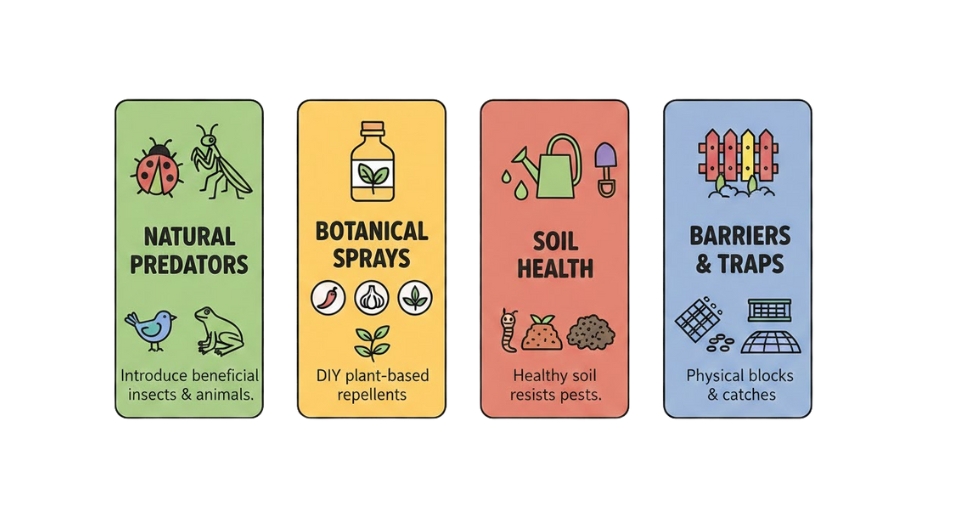
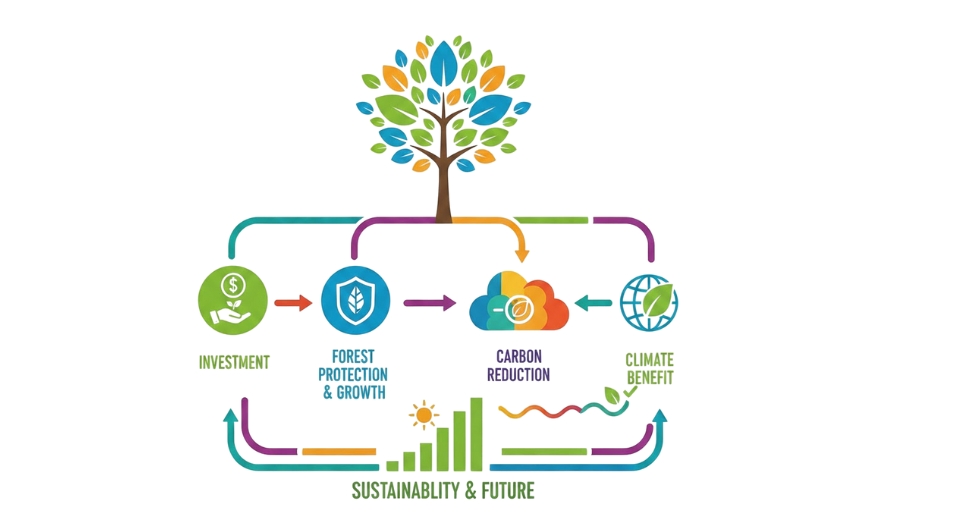
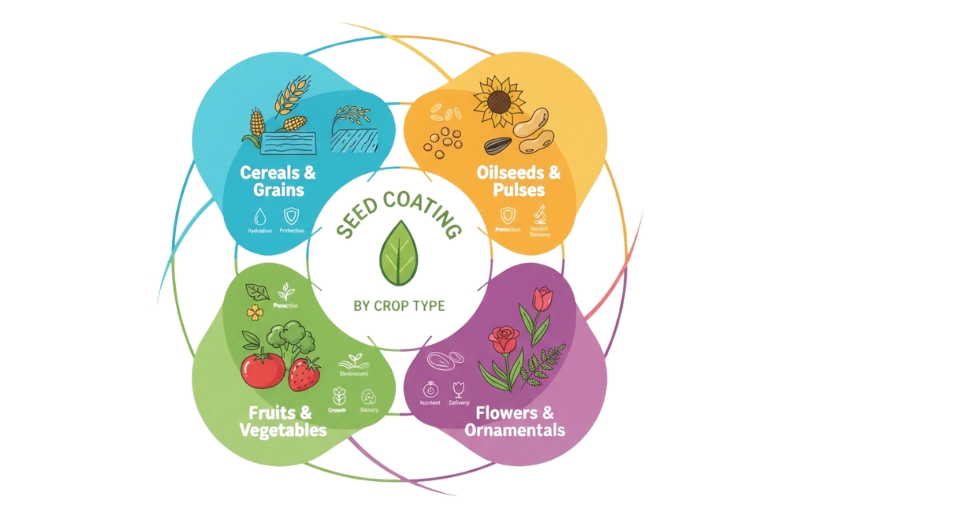
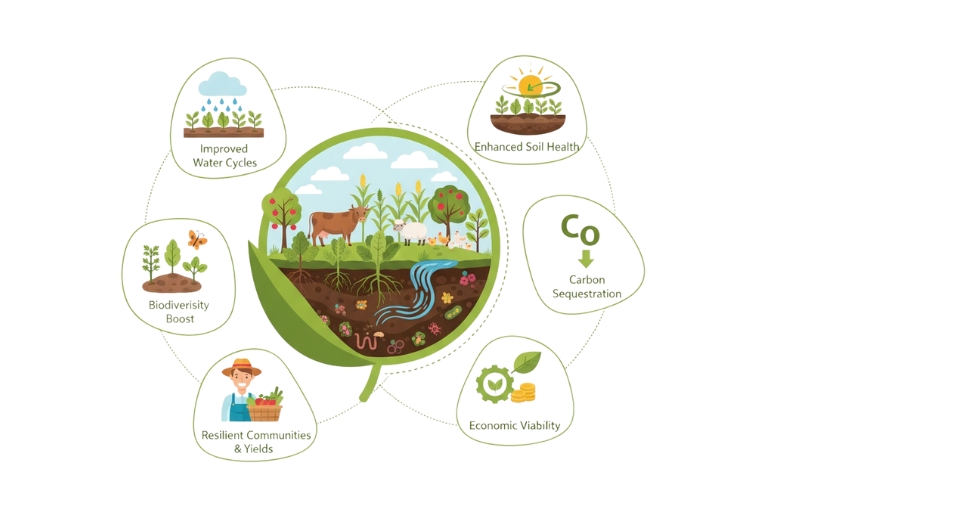

 US: +1 3023308252
US: +1 3023308252






